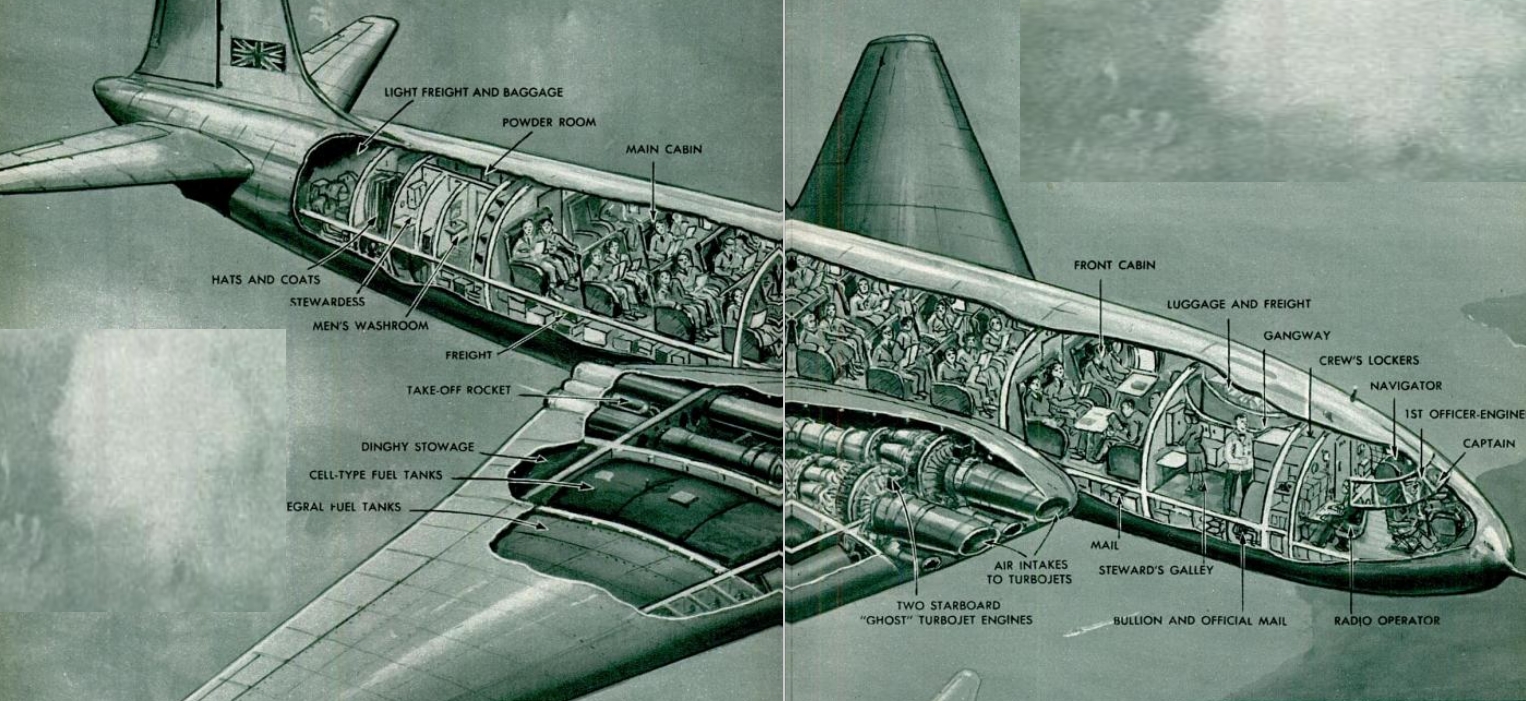In 1950, easy passenger jet travel was still a dream that could excite the public. The deHavilland Comet was still in its infancy when, for a test flight, it flew from London to North Africa, a distance of 3,000 miles, at a top speed of 450 miles per hour.
See Another Cutaway View of a Comet, 1950
The Comet was designed for maximum passenger (and crew) comfort and safety, with feature unheard of in today’s jets: separate room for hats and coats, gender-segregated washrooms, a dinghy stored in the wing, a First Class front cabin, large galley, and a room for stewardesses.
The Comet officially took off for regular passenger service on May 2, 1952. But the Comet was not destined for great things. Within only a year, the deHavilland Comet first crashed, a victim of metal fatigue. The accident in Karachi, Pakistan, which killed 11 people, bestowed a new distinction on the Comet: the first passenger jetliner crash resulting in fatalities.
Click to Enlarge to 1526 x 700 px:
Popular Mechanics: April 1950
